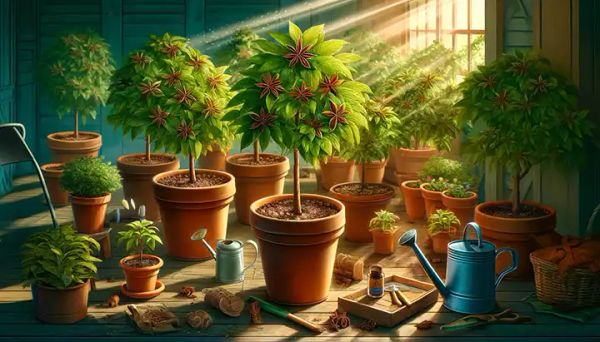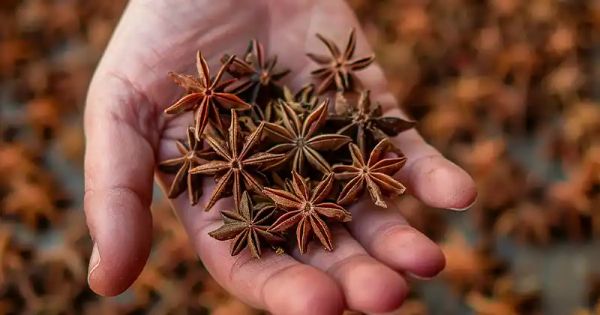Star anise is not only a delicious spice but also a valuable ingredient in traditional medicines. Fortunately, you can easily grow star anise in pots right in your own home, no matter where you live. This guide will take you through each step, from planting the seeds to harvesting the spice, allowing you to cultivate this exotic plant in your own garden.

Getting to Know Star Anise
The star anise we’re talking about here is known as Illicium verum. It is the true star anise used in cooking and herbal medicine, so be sure not to confuse it with the toxic Japanese star anise. While star anise can grow into a large tree, it also adapts well to living in containers if you take care of it properly.

Choosing the Perfect Container
When selecting a pot for your star anise, keep the following factors in mind:
- Size: Opt for a deep pot with a diameter of 18-24 inches. Star anise has a taproot system that needs space to grow.
- Material: Ceramic or terracotta pots are ideal as they allow for breathability and help regulate moisture levels.
- Drainage: Make sure the pot has good drainage to prevent waterlogging, which can harm star anise roots.

Propagation and Planting
Growing star anise from seeds can be a bit challenging due to their hard outer shell, which leads to a low germination rate. Here’s what you need to do:
- Seed Preparation: Soak the seeds in water for 24 hours to soften the tough outer shell.
- Soil Requirements: Use a well-draining and fertile potting mix with a pH level of 6.5-7.5. Adding aged compost can boost fertility.
- Planting: Plant the seeds about an inch deep into the soil, spacing them roughly 2-3 inches apart. Cover lightly with soil and water gently.

Creating the Ideal Growing Environment
For your star anise to thrive, provide it with the following conditions:
- Light: Star anise requires full sun, so place your pot where it can receive at least six to eight hours of sunlight daily.
- Temperature: It prefers temperatures between 55°F and 75°F. If you live in a cooler climate, you may need to bring your pots indoors during winter.
- Humidity: This plant loves humidity. If your environment is dry, consider using a humidity tray or misting the leaves regularly.
Caring for Your Star Anise
To ensure the health of your star anise plant, follow these care and maintenance tips:
- Watering: Water the plant when the top inch of soil feels dry. Star anise doesn’t like overly wet conditions, so allow the soil to dry out slightly between watering sessions.
- Fertilizing: Feed your plant with a balanced, slow-release fertilizer every two months during the growing season.
- Pruning: Pruning isn’t necessary unless you want to control the plant’s size or remove dead or diseased branches.
Managing Pests and Diseases
While star anise is relatively resistant to diseases, it can still be susceptible to pests like aphids and spider mites. Consider using organic pesticides or introducing natural predators, such as ladybugs, to your garden to keep these pests in check.
Harvesting the Spice
Here’s what you need to know about harvesting star anise:
- Time: It typically takes around six years for star anise trees to start producing fruit, and the seeds are usually harvested in the autumn.
- Method: Harvest the seed pods when they are fully mature but before they open. Dry them in a place away from direct sunlight to preserve their essential oils.
Challenges and Tips
Growing star anise is a long-term commitment, especially when starting from seed. Remember these key tips:
- Patience is Key: Growing star anise requires patience, but the rewards are worth it.
- Regular Check-ups: Monitor the plant for signs of stress or disease and adjust care as needed.
- Overwinter Indoors: If temperatures drop below 55°F, it’s best to bring your star anise indoors.
Growing star anise in pots may seem ambitious, but with patience and proper care, you can enjoy the beauty and culinary benefits of this exotic spice. Whether you use it in cooking, as a decorative piece, or in medicinal teas, star anise is a delightful addition to any home garden.




